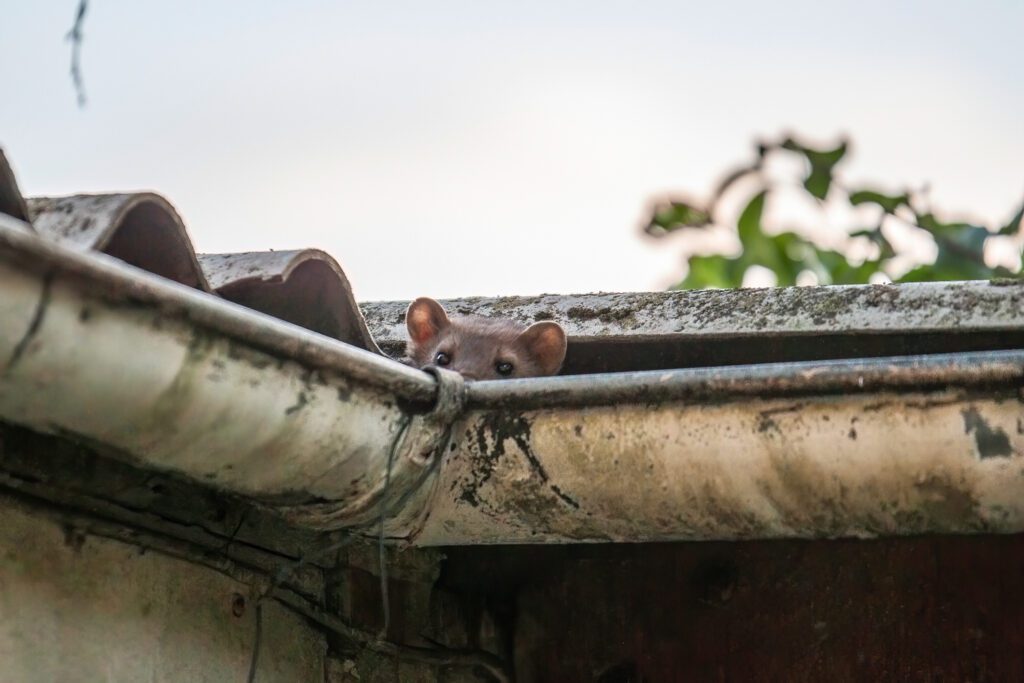For thousands of households across rural New Zealand, the water supply begins on the roof. Rainwater catchment systems—where water flows from your roof into a plastic or concrete water tank—are a sustainable and effective way to provide clean drinking water for your family. But if that water isn’t protected properly, it can also become a health risk.
Possums, birds, rats, mice, insects, and even frogs have been found in rainwater systems, sometimes making their way into the tanks themselves. These animals can contaminate your water with feaces, parasites, bacteria like E. coli, and other harmful pathogens—putting your household at serious risk.
At The Water MD, we’re not just about cleaning and repairing tanks. We’re here to help you protect your drinking water from the source to the tap. Here’s how you can prevent unwanted visitors from turning your water tank into their new home.

Why Animals Are Attracted to Water Tanks
Water access: Especially during dry spells, water tanks offer a tempting drink for birds, rodents, and possums.
Warmth and shelter: Small animals may seek refuge inside tanks, pipes, or guttering systems.
Measures That You Can Take To Stop Animals Getting In To Your Tank
1. Install Inlet and Overflow Screens
Every tank should be fitted with fine inlet and overflow screens—ideally 1 mm or finer mesh. Basically, this is mesh-like whitebait net netting to stop any access from unwanted visitors.
Be sure to inspect and clean these screens regularly to ensure they haven’t become clogged or damaged. Also check for any stagnant puddles or water on the ground near your tank so that mosquitoes have less opportunity to breed near your tank.
2. Use First-Flush Diverters
First-flush diverters channel the initial rainwater—along with leaves, bird droppings, and debris—away from your tank before the clean water enters.
- Reduces organic material that attracts pests
- Improves water quality by reducing contaminants
- Helps prevent algae and bacterial growth
These are a must-have in any rainwater harvesting system.
3. Secure All Openings
Even small gaps can be entry points for mice, frogs, or insects. Check and seal:
- Lid seals – Ensure your tank lid fits tightly and locks if possible
- Inspection hatches – Use secure covers and rubber seals
- Pipe connections and vents – Screen them or fit pest-proof covers
It only takes one opening for contamination to occur.
4. Trim Trees and Vegetation
Overhanging branches provide easy access for possums, rats, and birds to get to your roof—and from there, into your gutters and tank, so:
- Trim trees at least 1–2 metres away from roofs and tanks
- Remove dense shrubbery near tanks that may harbour rodents
This reduces both access and nesting opportunities.
5. Clean Your Gutters Regularly
Gutters clogged with leaves and droppings are an open invitation to pests—and the contamination can be washed straight into your tank. Steps include:
- Cleaning every 3–6 months, or more often in leafy areas
- Installing gutter guards to minimise buildup and access
- Checking for signs of animal activity—droppings, nests, gnawed edges
6. Check for Signs of Infestation
If you notice changes in water taste, smell, or clarity—or hear scratching or splashing in your tank—it may indicate pest activity.
Watch for:
- Unusual algae growth
- Debris in water from an unknown source
- Dead animals near overflow or entry points
If you suspect contamination, stop drinking the water immediately and call professionals for inspection and cleaning.
7. Get Regular Tank Cleaning and Inspection
Even with all precautions in place, your tank should be professionally cleaned every 2–3 years.
Preventing pests is easier—and cheaper—than dealing with the aftermath of contamination.
Protect What Matters Most: Your Drinking Water
Whether you’re catching rainwater into a concrete tank hidden beneath the ground, or a poly tank tucked beside your home, keeping animals and pests out is critical. Clean water means peace of mind, and it starts with prevention.
